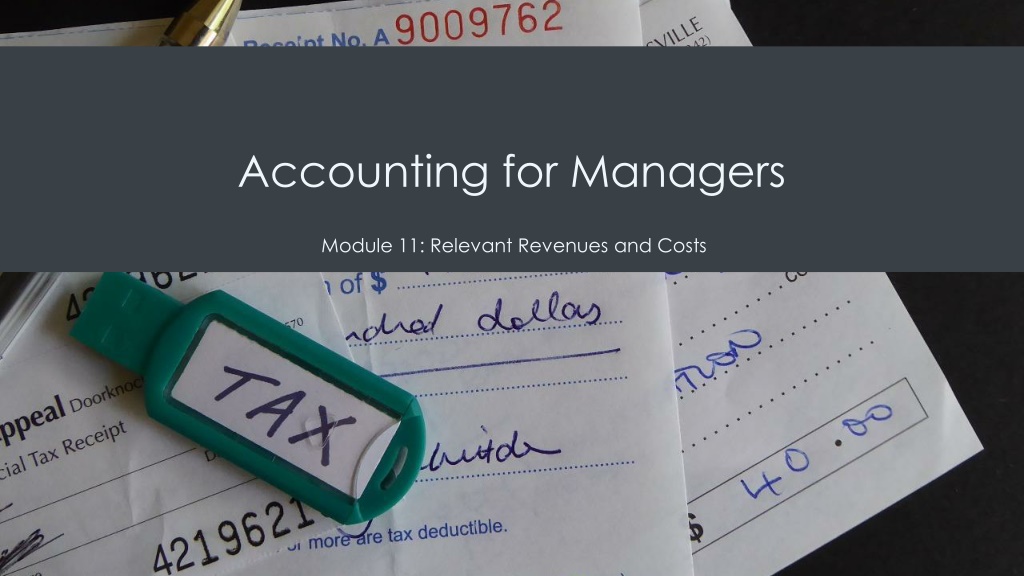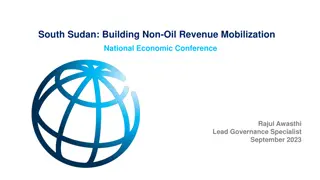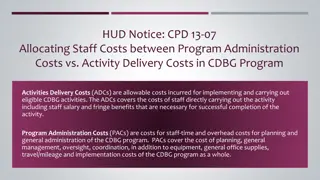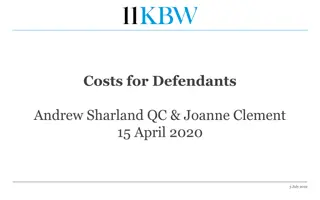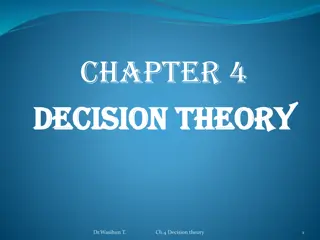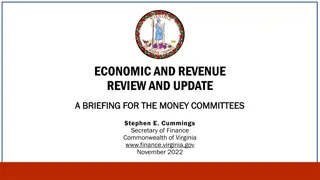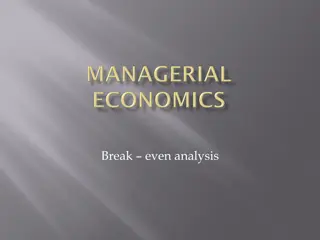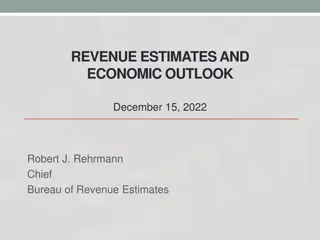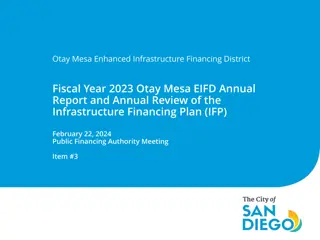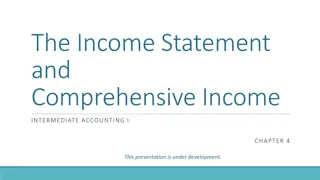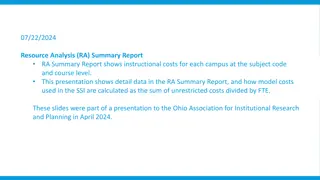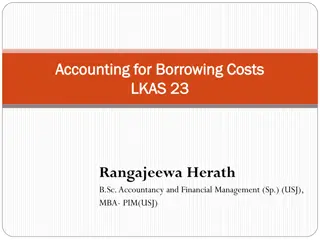Understanding Relevant Revenues and Costs in Decision-Making
Explore the concepts of relevant revenues and costs in decision-making, including differential costs, avoidable costs, sunk costs, opportunity costs, and relevant costs. Learn how to analyze costs, make add or drop decisions, and apply these principles through an example scenario with Recovery Sandals' fixed expenses.
Download Presentation

Please find below an Image/Link to download the presentation.
The content on the website is provided AS IS for your information and personal use only. It may not be sold, licensed, or shared on other websites without obtaining consent from the author. Download presentation by click this link. If you encounter any issues during the download, it is possible that the publisher has removed the file from their server.
E N D
Presentation Transcript
Accounting for Managers Module 11: Relevant Revenues and Costs
Differential Cost When we work to make decisions, we must look at pros and cons: differential analysis Defined as the difference in cost between any two alternative choices
Avoidable Costs Cost that can be eliminated completely depending on the alternative we pick Avoidable cost is a relevant cost
Sunk Costs Costs that happened and there is not one thing we can do about it They are never relevant in decision making process Always irrelevant
Opportunity Costs Loss of wages for week is called opportunity cost: cost of what is lost if one decision is made over another Definition: Opportunity cost refers to a benefit that a person could have received, but gave up, to take another course of action represents an alternative given up when a decision is made. We can talk about opportunity costs when we think about making component needed for product as opposed to buying from supplier already made
Analyzing Costs What matters in one decision may make no difference in a different Need to use skills we have learned to determine whether particular cost matters You will need different costs for different purposes Every decision made will require you to analyze costs, determine which ones are relevant or not, and analyze remaining costs Must look at total cost followed by differential costs
Add or Drop Decisions Adding, retaining or dropping a product or service can be a tough decision.
Example: Recovery Sandals Fixed Expenses Totals Assigned to Recovery Sandals $22,500 Not Avoidable Avoidable Salaries $22,500 Advertising $5,000 $5,000 Utilities $1,000 $1,000 Depreciation $1,000 $1,000 Interest expense (mortgage) Insurance $2,000 $2,000 $500 $500 General Administrative $2,000 $2,000 Total fixed expenses $34,000 $6,500 Net operative income (loss) $18,500 $13,000 $27,500
Make or Buy Decisions Example: Hupana Cost Categories Relevant Costs: Make Relevant Costs: Buy Direct Materials $5,000 Direct Labor $4,000 Variable Overhead $600 Depreciation of equipment (not relevant) Allocation of fixed overhead (not relevant) Cost of buying $10,000 Total cost $9,600 $10,000 Different in favor of MAKING $400
Special Order Decisions A call just came in to Hupana for a special order shoe. A basketball team would like Hupana to make 50 pair of their shoes, with the awesome soles, but a high top version in fuschia! They have never made high tops before, nor do they have the material in fuschia. The team is willing to pay $150 a pair for these custom shoes. What information does Hupana need to decide if taking this special order is a good idea or not?
Example: Special Order Expected Revenue: (50 pair for $150 each) = $7,500 Expenses Amount (USD) Material-fuschia (50 x 7 units x $3.5 per unit) $1,225 Direct labor (5 0x .8 x $30) $1,200 Variable overhead (30 hours x $3 per hour) $150 Total Variable Expenses $2,575 Fixed Expense Dye for material cutter $1,200 Total expenses for special order $3,775 Incremental net operating income $3,725
Constrained Resource Something that you have a limited amount of (time, labor hours, raw materials) When resource is constrained, you must determine best way to use this resource to bring most money to net profit How would you stock your store? What else would you want to look at in your retail space? How do we figure out best usage?
Quick Review Only the costs that vary between different options matter Those that stay the same are irrelevant to your decision making process, and ignoring them will save tons of time Relevant costs differ depending on decision needed Keep practicing decision making skills by reviewing examples and thinking through which costs are most important
